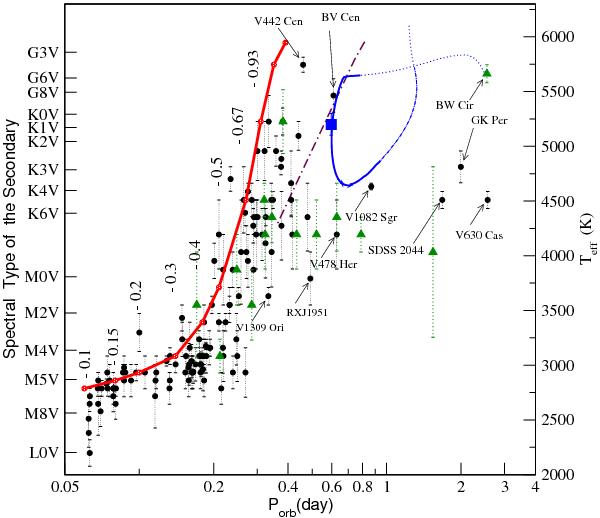Fig. 12

Spectral types and effective temperatures of the donors of CVs (black dots) and LMXB (green triangles) plotted vs. their orbital periods (an update of the Beuermann et al. 1998 list). CVs with remarkably long periods are marked individually. V479 And is shown by a solid blue square. The black dot-dashed line marks the bifurcation period. The red line corresponds to the periods of semi-detached systems with main-sequence donors and 0.7 M⊙ accretors. The evolutionary track of the system with initial masses of donor and accretor equal to 1 M⊙ is plotted with the blue line. Dotted parts of the line correspond to a detached state, solid parts of the line to the semi-detached state, while the dash-dotted part corresponds to the semi-detached state in which the mass transfer rate is below 10-10 M⊙ yr-1 and the system may hardly be observed. (i) effective temperatures of CVs below about 4500 K (later than K5) are considered as unreliable and (ii) evolutionary models with gray atmosphere boundary conditions overestimate the Teff of low-mass stars (Chabrier & Baraffe 1997).
Current usage metrics show cumulative count of Article Views (full-text article views including HTML views, PDF and ePub downloads, according to the available data) and Abstracts Views on Vision4Press platform.
Data correspond to usage on the plateform after 2015. The current usage metrics is available 48-96 hours after online publication and is updated daily on week days.
Initial download of the metrics may take a while.


